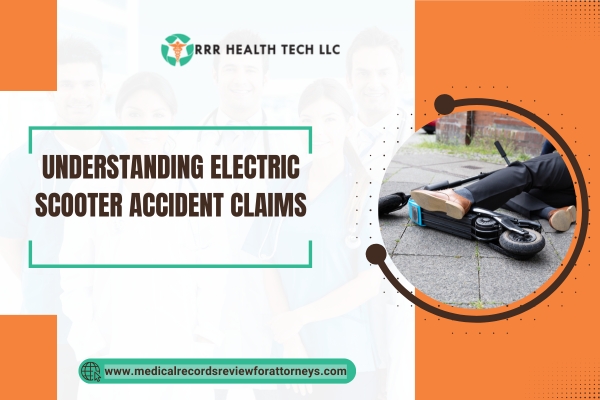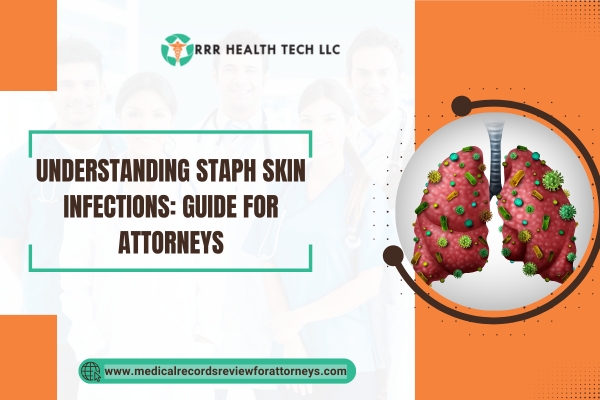
Introduction
With the advancement in technology, there has been an increase in people seeking corrective procedures for their eyesight, but some still choose to wear contact lenses. As any product has its drawbacks, lawyers practice representation to clients who have suffered due to poorly manufactured contact lenses or who have been improperly fitted with certain lenses.
There is a broad scope of medical records, law history, as well as legal and product safety features that require attention and are crucial to the success of the case. The article particularly focuses on viewing contact lenses as a source of damage and injury to a consumer, possible signs of malfunction, and what legal claims can be used when seeking to prove the manufacturer’s negligence. How such record review services can assist in cases law will also be outlined.
Contact lens damage and injury
Contact lenses related eye injury is quite common and may even include vision loss. Eye care lawyers need to understand the mechanics of lenses in order to best represent their clients who have sustained injuries due to the lens.
Types of Contact Lens Injuries
- Corneal Abrasions: Any scratch on the cornea that results due to rough handling of the contact lenses, aggressive fitting, and so on.
- Infections: Bacterial and fungal infections may take place during poor sanitary practices or excessive use of lenses.
- Chemical Burns: Resulting from contact with caustic agents such as cleansing agents.
- Allergic Reactions: There is a chance for allergic reactions to the lens material or cleaning reagents.
Statistics on Contact Lens Injuries
The American Academy of Ophthalmology dangling statistics states that, every year, around 1 in 500 contact lens wearers develop a serious eye infection. There are still concerns during such usage as 20% of contact lens user’s state experiencing discomfort during such usage as was published in the Journal of Contact Lens Research and Science.
Symptoms of poor fitting contact lens
Identifying the symptoms of poorly fitting contact lenses is essential for both clients and attorneys. Early recognition can prevent further damage and strengthen a legal case.
Common Symptoms
- Redness and Irritation: There could be many reasons for these signs, but the first one should always be the safety of the eye and the cause may be caused by ill-fitting contact lenses or infection.
- Discomfort or Pain: Fitting of the lenses should deal with minimum discomfort; however, improper settling in the eye may cause considerable pain.
- Excessive Tearing: Contact lenses that do not fit well can cause severe irritation causing excessive infliction.
- Blurred Vision: Any obstruction in this optical device can result in visual aberrations.
Importance of Documentation
For attorneys, documenting these symptoms through medical records is vital. This evidence can substantiate claims of negligence or product defects.
Defective contact lens
Defective contact lenses are a significant concern in the legal landscape. Understanding the types of defects and their implications can aid attorneys in building their cases.
Types of Defects
- Manufacturing Defects: Issues that arise during the production process, such as improper materials or faulty designs.
- Design Defects: Flaws in the design of the lens that make them unsafe for use, even if manufactured correctly.
- Labelling Defects: Inadequate instructions or warnings that fail to inform users of potential risks.
Legal Implications
Also, lawyers have to know the requirements for case of this type or for a claim regarding a defective product, namely that the product was shown to be unreasonably dangerous, the defect was present at the time of leaving the manufacturer, and the defect led to the injury in question..
Contact lens lawsuit
Navigating the complexities of a contact lens lawsuit requires a thorough understanding of both medical and legal principles.
Common Grounds for Lawsuits
- Negligence: Where the manufacturer of the contact lenses or the health care providers are unable to make the contact lenses safe, claims may be initiated.
- Product Liability: A liable party can file a suit against the manufacturer for defective products.
- Breach of Warranty: If a lens is unable or fails to comply with the safety measures guaranteed by the lens manufacturer, a breach of warranty claim could be applicable in such instances.
Steps to Pursue a Lawsuit
- Consultation with Medical Experts: Engaging with ophthalmologists or optometrists to understand the medical implications of the injury.
- Medical Record Review: Utilizing medical record review services to compile and analyze relevant patient records.
- Gathering Evidence: Collecting documentation of the injury, including medical reports, photographs, and witness statements.
Eligibility for contact lens lawsuit
Determining eligibility for a contact lens lawsuit is critical for attorneys representing clients.
Criteria for Eligibility
- Injury Documentation: Clients may require medical records or proof of their injuries.
- Proof of Defect: There must be eyewitness accounts or evidence showing that there was a defect in the lens.
- Causation: There must be a clear and direct linking factor between the particular defect and the injury in question, showing that such defect caused the harm suffered by the particular client.
Case Studies
Case Study 1: Corneal Abrasion from Defective Lens
Overview of the Case: A 28yearold woman suffered severe acute pain, vision threaten after using a defective contact lens.
Challenges: The lens was defective and the manufacturer was not giving adequate warning, were the two main points which had to be proved.
Solutions: Medical record review services were sought out to establish the evidence of how the injury occurred and also that of the lens’s defect.
Case Study 2: Infection Due to Poor Fitting
Case Summary: A 35yearold male who had poor contact lens fitting began to wear the very tight contact lenses which lead to the very aggravating eye infection.
Challenges: It was easy to prove that the optometrist who recommended the lenses had contributed to the negligence.
Solutions: The linking of the poor fit of the lens to the infection was established through expert evidence provided WHO are ophthalmologists and an appraisal of the relevant medical records.
Conclusion
The authors of this article also recognize the importance of legal representation for those who have suffered due to contact lenses. Using such case, they advocate for the diagnosis, study, and review of medical records to prove more effectively and directly the aspects of contact lens injuries. The lawyers will be able to grasp the key aspects necessary to pursue the best outcome for their clients in this well-structured manual.


